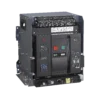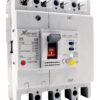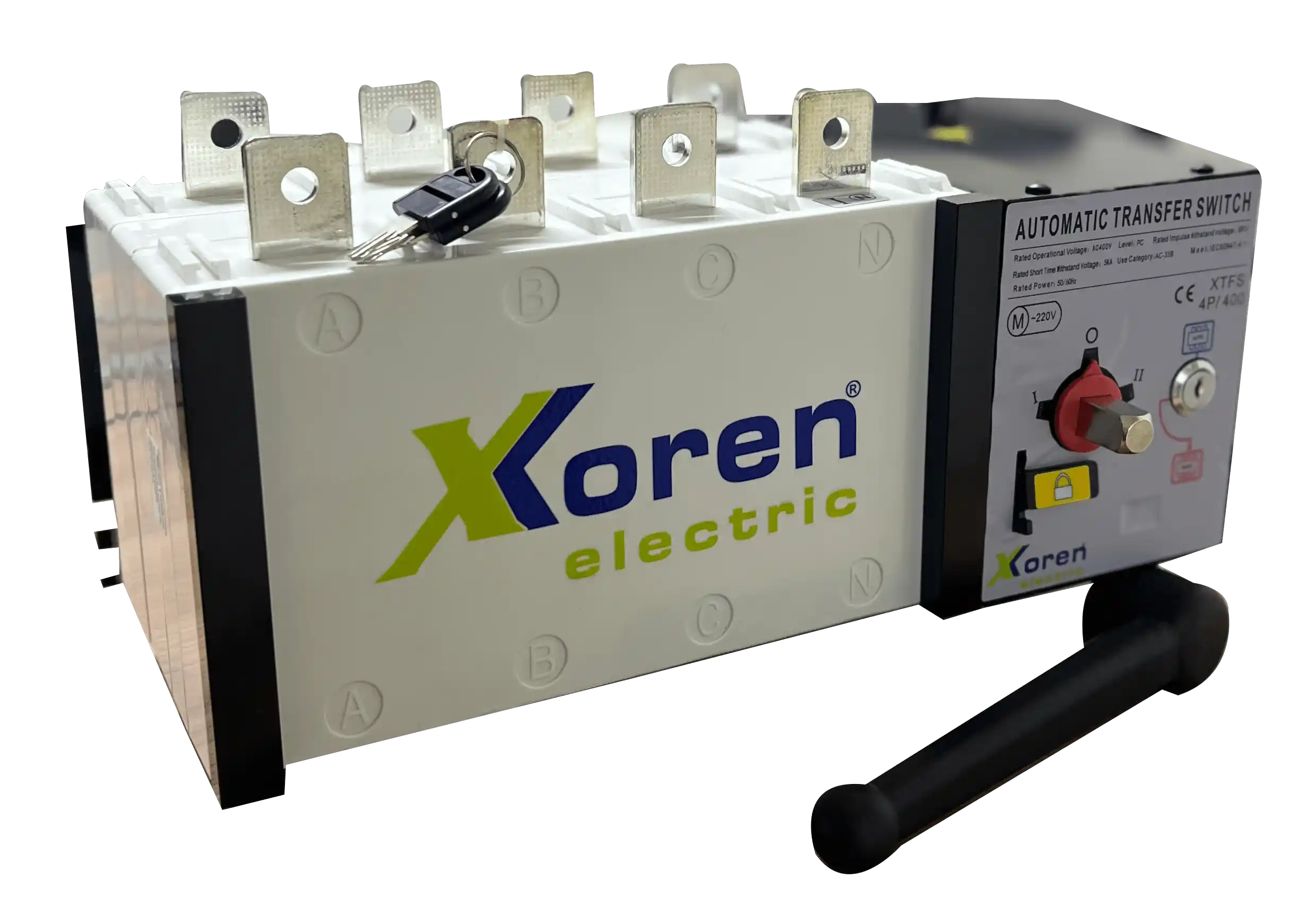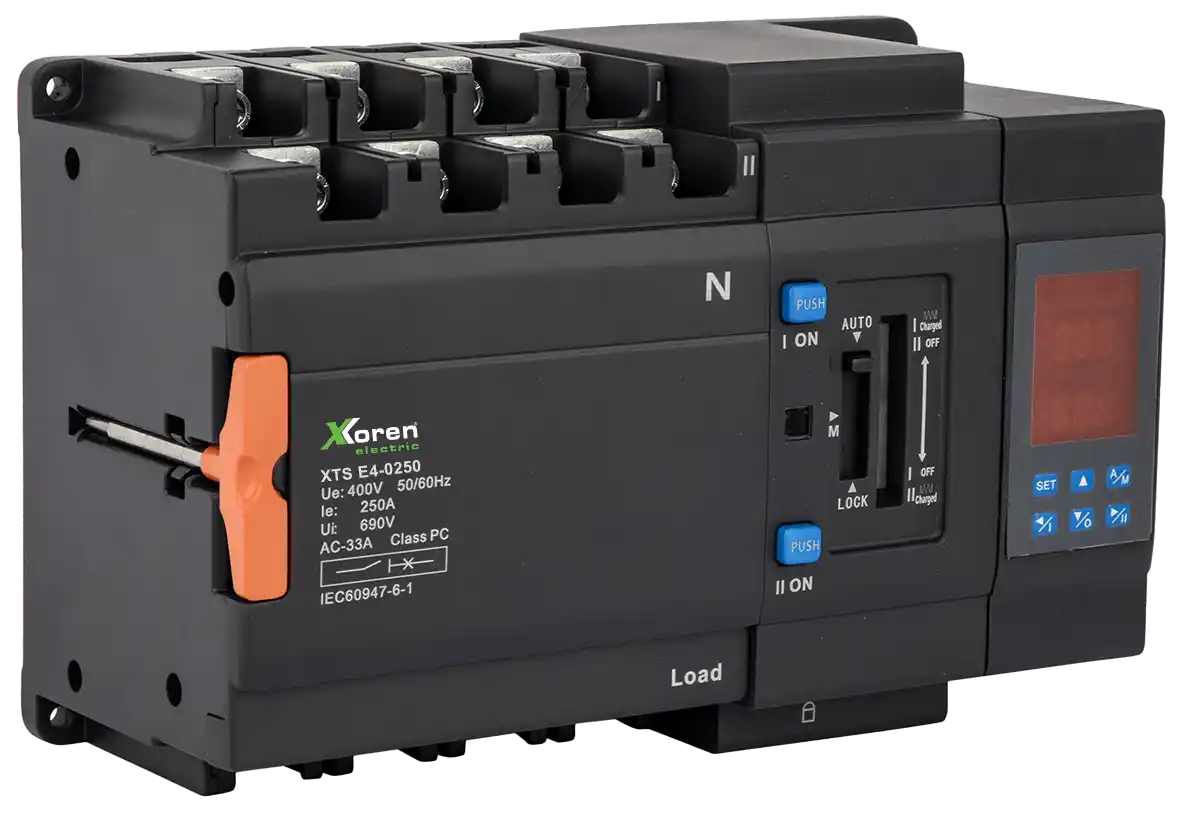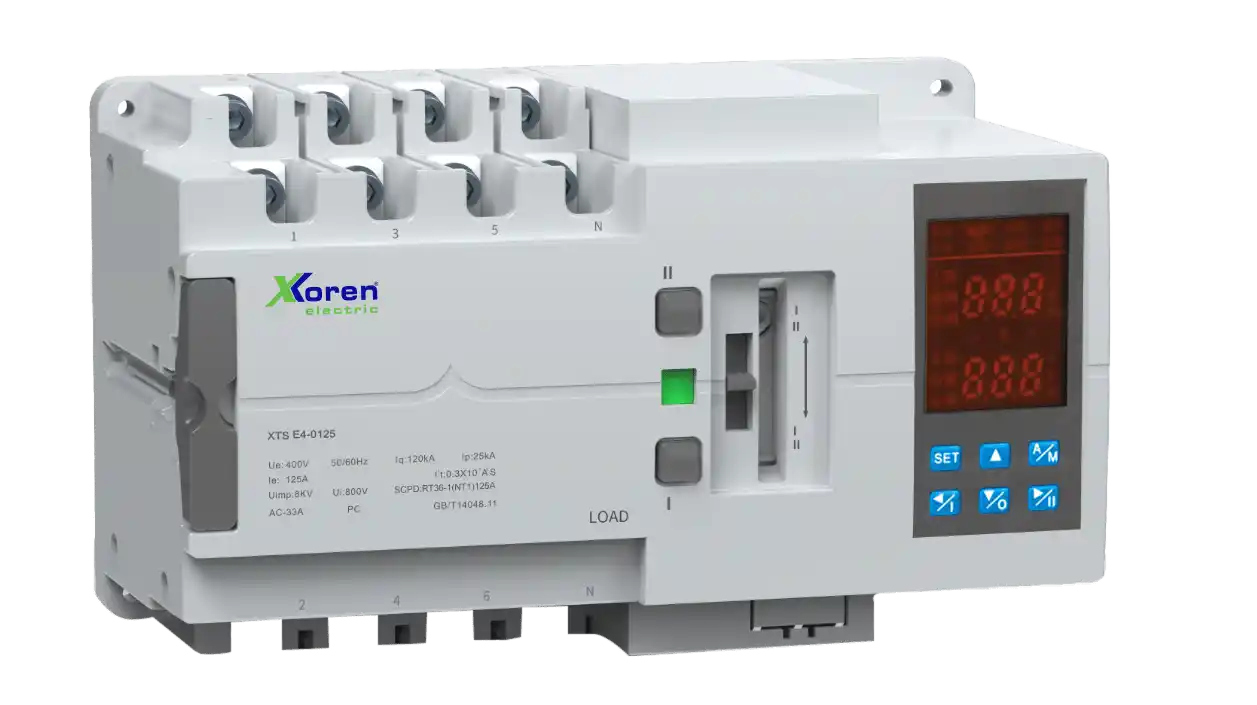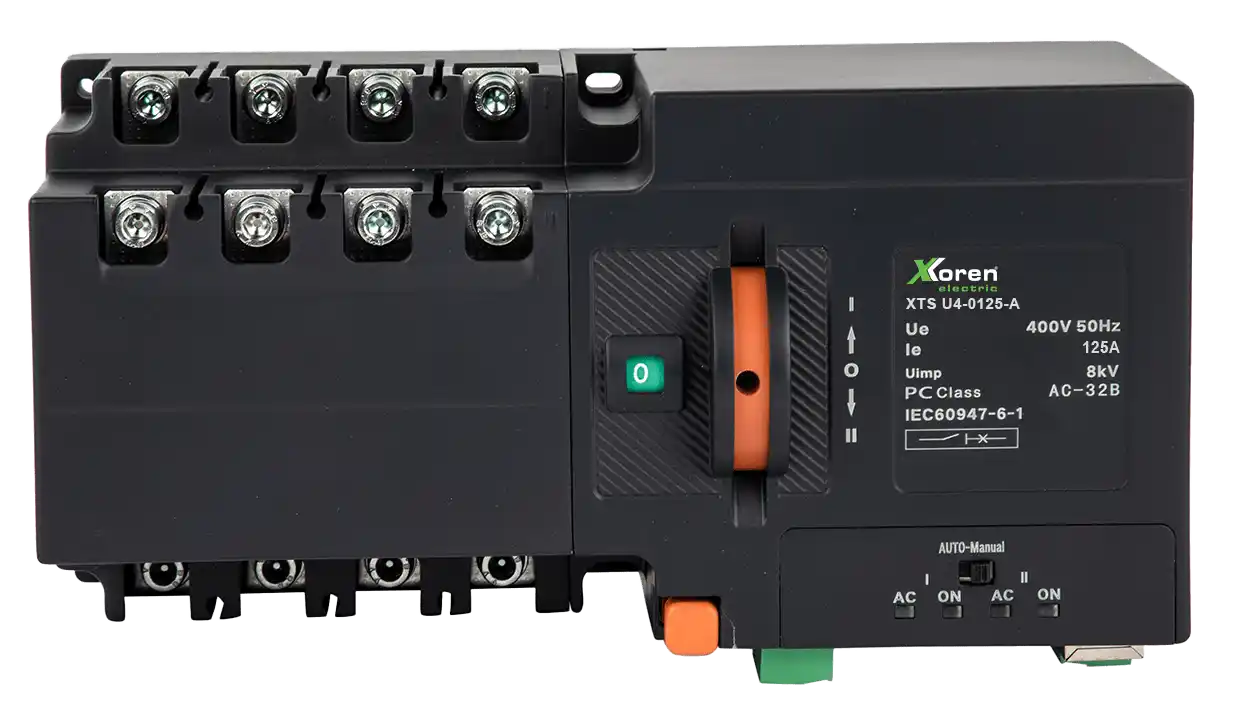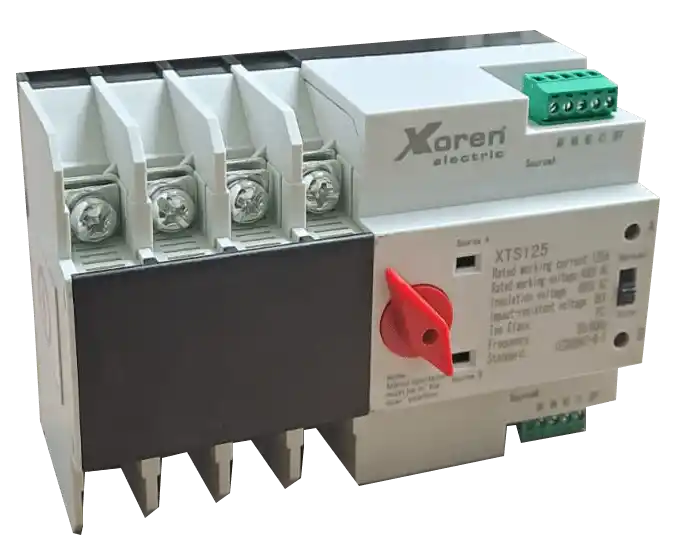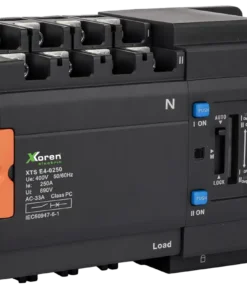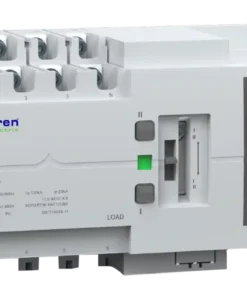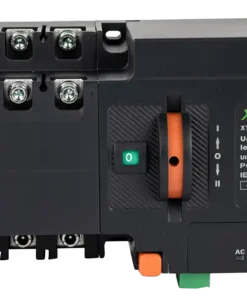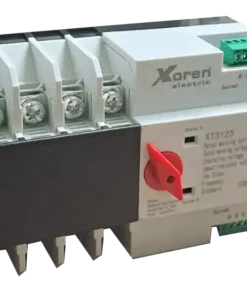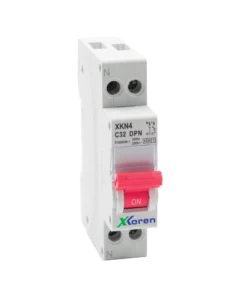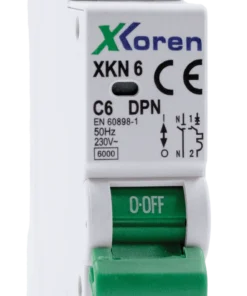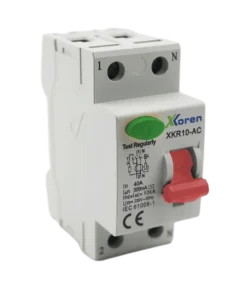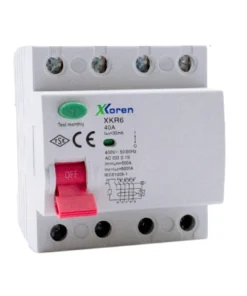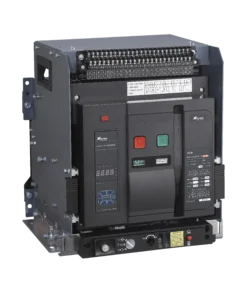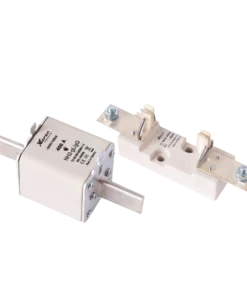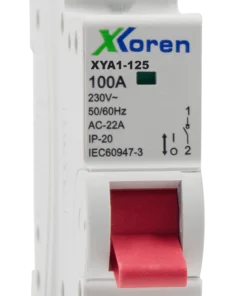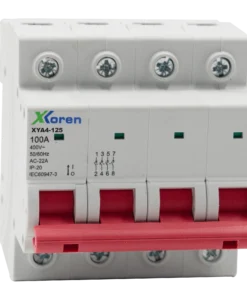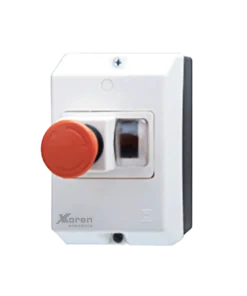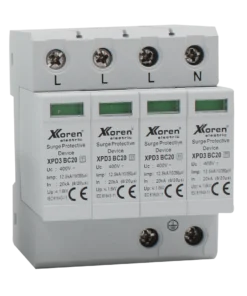Technical Specifications:
Number of Poles: 4P
Rated Operating Voltage: 400V
Rated Current: Up to 3200A
XTS 35mm DIN Rail and XTFS mounting type options
E Electronic Series
Rated Working Voltage: 400V/415V
Rated Current: Up to 630A
Functions: Digital control, power monitoring,
recognizing and switching the difference between two energy sources
.
Manual lock control with key
Easy to use and reliable
Used in critical areas such as server rooms, cooling systems, base stations, infrastructure systems, emergency and disaster management centers, control towers
Areas of Use of Automatic Transfer Switches
Automatic transfer switches are devices that automatically switch to a backup power source during a power outage. They are generally used in areas with critical functions where power outages can have serious consequences. The most common areas of use for these switches include hospitals, data centers, airports, large industrial facilities, and security centers. In such places, power outages can cause work to stop or pose a life-threatening risk, so the reliability of automatic transfer switches is very important.
In hospitals, automatic transfer switches are used to provide uninterrupted power to vital departments such as operating rooms and emergency rooms. Although generators are activated during a power outage, it can take a few seconds for these generators to activate. Automatic transfer switches switch to an alternative power source during this short period of time, allowing equipment to continue operating uninterruptedly. This can be critical enough to save patients’ lives.
In data centers, even a momentary power outage in continuously operating servers and storage units can cause serious data loss. In the event of a power outage, automatic transfer switches are activated to ensure that systems continue to operate safely and provide an uninterrupted power supply. The effective use of backup generators or UPS systems in such environments depends on the speed and reliability of automatic transfer switches.
In industrial facilities, the interruption of the production line can also cause significant costs. If production processes are interrupted, problems such as restarting the machines and products becoming faulty occur. Especially in energy-intensive sectors, automatic transfer switches are essential for the uninterrupted continuation of production. In addition, energy management and security are of great importance in such facilities, and switches ensure that energy resources are optimized.
Automatic transfer switches are also widely used in commercial buildings and offices. Power outages can reduce employee productivity and disrupt commercial operations. For this reason, automatic transfer switches with generator-supported power systems are used in large commercial structures and high-rise buildings to ensure that energy continues uninterrupted. They prevent disruptions in the event of a power outage and ensure that business processes continue smoothly.
They are also important in terms of security; they ensure that critical security devices such as alarm systems, door locking mechanisms and cameras continue to operate. As a result, automatic transfer switches play a role that both saves lives and reduces operational costs.
Features of Automatic Transfer Switches
Automatic transfer switches are advanced devices that can detect power outages and automatically switch to backup energy sources. With these features, they provide uninterrupted energy supply and have an important place in energy management. Their main features include fast response times, durability and energy efficiency. They allow systems to operate without interruption when power outages occur.
Automatic transfer switches detect abnormal conditions in the electrical system and quickly switch to an alternative power source. This prevents damage to the devices in the system during the transition. Thanks to the fast response time of the switches, critical devices continue to operate without noticing the power source change. This feature is especially important for environments that require high reliability.
Advanced automatic transfer switches have remote monitoring and controllability features. This allows users to monitor the operating status of the switches and intervene when necessary. Remote monitoring is a great advantage, especially in large-scale projects or facilities with a large number of switches. Technical personnel can continuously monitor the operation of the system and intervene when necessary.
The durability of the switches is also an important feature. They need to operate reliably even in difficult environmental conditions. Switches used in industrial facilities and outdoors are resistant to challenging factors such as high temperature, humidity, dust and vibration. Also manufactured from long-lasting materials, these switches minimize maintenance requirements and provide reliable performance for many years.
Energy efficiency is also a prominent feature of automatic transfer switches. These devices are designed to minimize energy loss during energy transition. Offering effective solutions in terms of energy management, these switches help businesses reduce their energy costs. Energy efficiency provides significant savings, especially for large facilities that constantly consume energy.
Automatic transfer switches also have many advantages in terms of safety. Not requiring manual intervention during a power outage minimizes human error in workplaces or environments where critical services are maintained. At the same time, these switches provide safety measures by detecting electrical hazards such as overcurrent and short circuits. Thanks to these features, automatic transfer switches both increase work safety and extend the life of systems.
Uninterruptible Power Management with Automatic Transfer Switches
Automatic transfer switches are critical for power management. Uninterrupted power management provides a great advantage, especially in critical business processes or vital applications. These switches provide uninterrupted workflow by quickly and safely switching to alternative power sources during power outages. They have a wide range of uses, from large industrial facilities to commercial buildings.
Uninterrupted power management is very important for the continuity of business activities. During power outages, automatic transfer switches minimize downtime and keep systems operating safely. This type of solution can reduce energy management costs while also preventing major financial losses.
Highly reliable automatic transfer switches eliminate the problems that sudden outages will cause and ensure electrical continuity. These switches are of vital importance, especially in areas where outages are frequently experienced or where energy needs are critical. These switches, which can work integrated with generators, UPS systems and other backup energy sources, ensure that systems continue without interruption.
Automatic transfer switches used in data centers ensure the continuity of server and network systems. Uninterruptible power management is important in environments where large amounts of data and transactions must be processed. Similarly, in production lines, these switches allow the production process to continue uninterrupted.
Uninterruptible power management with automatic transfer switches provides businesses with great flexibility in energy management. These devices, which can switch between power sources quickly and smoothly, ensure business continuity in the event of a power outage and reduce costs. They have a wide range of uses from large-scale industrial facilities to small commercial buildings and can work integrated with all types of systems. This provides businesses with great advantages in operational security and energy management.
Automatic Transfer Switch (ATS) Selection Criteria
Automatic Transfer Switch Selection Criteria includes the main elements that should be considered for the correct selection of ATS devices that provide a reliable backup power solution for critical electrical systems. ATS devices, which provide uninterrupted power flow by providing a fast transition from the main power source to the backup power source in case of power outages, play a vital role especially in industrial facilities, hospitals, data centers and power plants. However, if the correct ATS selection is not made, the security and efficiency of the system may be compromised.
One of the first factors to consider when selecting an ATS is the device’s **power capacity** and circuit compatibility. The power capacity of an ATS must meet the needs of the loads to which it will be connected. Especially in large facilities, ATS models that support high currents should be preferred. In addition to power capacity, the **transition time** of the ATS device is also of great importance. For example, ATS devices that provide rapid transition in facilities where sensitive electronic equipment is located can prevent damage to such devices.
**Voltage requirements** is also an important criterion to consider when selecting an ATS. The voltage capacity of ATS devices should be determined according to the voltage requirements of electrical circuits. While some ATS devices can operate within a certain voltage range, others have much higher voltage capacity. Therefore, when selecting an ATS, the voltage capacity of the device should be adapted to the needs of the system.
When selecting ATS devices, **compliance with safety standards** and certifications should not be overlooked. An ATS device with safety certificates safely controls the flow of electricity and takes all safety precautions to provide uninterrupted power. The ease of installation and maintenance of the ATS device is also important in terms of long-term costs. Models with low maintenance requirements provide less interruption in facilities, saving costs and time.
**Remote control** and **automation features** are also among the advantages offered by modern ATS devices. IoT-connected ATS devices allow facility managers to monitor power status in real time. This feature provides rapid intervention in case of faults and increases facility safety. In addition, modern ATS devices equipped with digital displays and user-friendly interfaces make energy management more practical.
Finally, **spare parts availability** and **service support** are also among the factors that affect ATS selection in the long term. Especially in large facilities, the ability to quickly repair and replace parts of ATS devices is of great importance for maintaining operational continuity.
What Are Automatic Transfer Switches (ATS) and How Do They Work?
Automatic Transfer Switches (ATS) are devices used in electrical systems that are activated in the event of a power outage and quickly switch from the main power source to the backup power source. ATS devices play a critical role in providing uninterrupted power in places where power outages are sensitive. They automatically activate and ensure safety in places where uninterrupted power is needed, such as hospitals, data centers, and power plants.
The operating principle of ATS devices is quite simple. If there is an interruption while the electricity flow is being provided from the main power source, the ATS detects this interruption and quickly activates the backup power source. This transition process may vary depending on the type of ATS; some models react in microseconds, while others require a longer transition period. Thanks to their **uninterruptible power supply** capabilities, ATSs prevent disruptions in critical processes.
Automatic Transfer Switches basically have two main sources: primary (main power source) and secondary (backup power source). When a power outage occurs, the ATS automatically switches to the backup power source and maintains the flow of electricity. The backup power source can usually be generators or batteries. However, the ATS usually switches back to the main power source after the system has stabilized.
One of the biggest advantages of ATS devices is that they can operate automatically without requiring manual intervention. This both saves users’ time and minimizes human error in critical situations. The use of ATS devices, especially in large-scale facilities and critical infrastructure projects, increases the reliability of the systems and ensures uninterrupted energy flow.
The benefits of ATSs are also significant in terms of **energy efficiency** and **security**. For example, they prevent losses that may occur in case of power outages and ensure production continuity in businesses. In addition, modern ATS models provide user-friendly solutions in terms of energy management by offering remote monitoring and management options. Thanks to IoT integration, ATS devices can be controlled via the cloud and send instant notifications in case of failure.
**Maintenance requirements** should also be considered when using ATS. Most ATS devices require regular maintenance, but this maintenance is usually quick and economical. Periodic testing of ATS devices is of great importance for long-term use. Periodic testing should be performed to ensure efficient operation of ATSs, especially in systems where high currents are constantly flowing.
Automatic Transfer Switch (ATS) Selection Criteria
Automatic Transfer Switch Selection Criteria includes the main elements that should be considered for the correct selection of ATS devices that provide a reliable backup power solution for critical electrical systems. ATS devices, which provide uninterrupted power flow by providing a fast transition from the main power source to the backup power source in case of power outages, play a vital role especially in industrial facilities, hospitals, data centers and power plants. However, if the correct ATS selection is not made, the security and efficiency of the system may be compromised.
One of the first factors to consider when selecting an ATS is the device’s **power capacity** and circuit compatibility. The power capacity of an ATS must meet the needs of the loads to which it will be connected. Especially in large facilities, ATS models that support high currents should be preferred. In addition to power capacity, the **transition time** of the ATS device is also of great importance. For example, ATS devices that provide rapid transition in facilities where sensitive electronic equipment is located can prevent damage to such devices.
**Voltage requirements** is also an important criterion to consider when selecting an ATS. The voltage capacity of ATS devices should be determined according to the voltage requirements of electrical circuits. While some ATS devices can operate within a certain voltage range, others have much higher voltage capacity. Therefore, when selecting an ATS, the voltage capacity of the device should be adapted to the needs of the system.
When selecting ATS devices, **compliance with safety standards** and certifications should not be overlooked. An ATS device with safety certificates safely controls the flow of electricity and takes all safety precautions to provide uninterrupted power. The ease of installation and maintenance of the ATS device is also important in terms of long-term costs. Models with low maintenance requirements provide less interruption in facilities, saving costs and time.
**Remote control** and **automation features** are also among the advantages offered by modern ATS devices. IoT-connected ATS devices allow facility managers to monitor power status in real time. This feature provides rapid intervention in case of faults and increases facility safety. In addition, modern ATS devices equipped with digital displays and user-friendly interfaces make energy management more practical.
Finally, **spare parts availability** and **service support** are also among the factors that affect ATS selection in the long term. Especially in large facilities, the ability to quickly repair and replace parts of ATS devices is of great importance for maintaining operational continuity.
What Are Automatic Transfer Switches (ATS) and How Do They Work?
Automatic Transfer Switches (ATS) are devices used in electrical systems that are activated in the event of a power outage and quickly switch from the main power source to the backup power source. ATS devices play a critical role in providing uninterrupted power in places where power outages are sensitive. They automatically activate and ensure safety in places where uninterrupted power is needed, such as hospitals, data centers, and power plants.
The operating principle of ATS devices is quite simple. If there is an interruption while the electricity flow is being provided from the main power source, the ATS detects this interruption and quickly activates the backup power source. This transition process may vary depending on the type of ATS; some models react in microseconds, while others require a longer transition period. Thanks to their **uninterruptible power supply** capabilities, ATSs prevent disruptions in critical processes.
Automatic Transfer Switches basically have two main sources: primary (main power source) and secondary (backup power source). When a power outage occurs, the ATS automatically switches to the backup power source and maintains the flow of electricity. The backup power source can usually be generators or batteries. However, the ATS usually switches back to the main power source after the system has stabilized.
One of the biggest advantages of ATS devices is that they can operate automatically without requiring manual intervention. This both saves users’ time and minimizes human error in critical situations. The use of ATS devices, especially in large-scale facilities and critical infrastructure projects, increases the reliability of the systems and ensures uninterrupted energy flow.
The benefits of ATSs are also significant in terms of **energy efficiency** and **security**. For example, they prevent losses that may occur in case of power outages and ensure production continuity in businesses. In addition, modern ATS models provide user-friendly solutions in terms of energy management by offering remote monitoring and management options. Thanks to IoT integration, ATS devices can be controlled via the cloud and send instant notifications in case of failure.
**Maintenance requirements** should also be considered when using ATS. Most ATS devices require regular maintenance, but this maintenance is usually quick and economical. Periodic testing of ATS devices is of great importance for long-term use. Periodic testing should be performed to ensure efficient operation of ATSs, especially in systems where high currents are constantly flowing.
Features and Other Details of Automatic Transfer Switches
Features and Other Details of Automatic Transfer Switches discusses the technical details of ATS devices and features that improve the user experience. ATS systems go beyond just providing power supply switching and offer many advantages to the user in terms of security and energy management. Since different models offer a wide range of backup power management solutions, ATS features are of great importance.
Firstly, **high sensitivity** is an important feature of ATS systems. It increases the reliability of the system by responding quickly to sudden power outages. Thanks to this feature, uninterrupted power supply, which is vital for sensitive electronic devices, is ensured. ATS devices can also be equipped with smart features that can automatically adjust according to the load levels in the circuit.
**Capacity and Voltage Compatibility**: ATS systems are available in different capacities, which allows for a wide range of applications. They can address a wide range of needs, from small businesses to large industrial facilities. Voltage compatibility is also an important feature to consider when choosing an ATS; some ATS models can withstand high voltages, while others operate effectively at lower voltages.
**Remote Monitoring and Management Features**: ATS devices integrated with IoT and cloud-based control systems allow users to be informed about the power status instantly. Remote monitoring increases operational efficiency, especially in large facilities. These devices send instant alerts to system administrators in case of a fault or power outage, ensuring users have a high-level experience in terms of security and energy efficiency.
The **ease of maintenance** and **accessibility of spare parts** of ATS devices are also among the prominent features. It provides long-term savings by reducing operating costs thanks to its easily installed and replaceable parts. Especially in intensively used systems, continuity of maintenance ensures the longevity of the devices.
**Versatile Areas of Use**: Automatic Transfer Switches are widely used not only in commercial and industrial areas, but also in critical infrastructures such as hospitals, data centers, educational institutions. The durability and high performance of ATS systems ensure continuous energy flow in such places.


